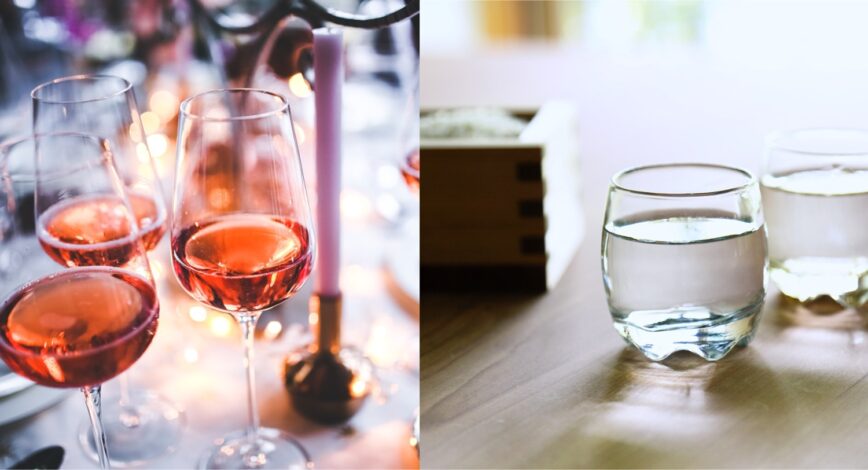
Serving
Sake and Wine – Difference between 2 fermented alcohol
Japanese Sake is often compared with Wine to understand especially for the beginners.
As many of you know, Japanese Sake is a fermented alcohol; same as beer and wine. When people start to understand about Japanese Sake a lot of people compare Sake with Wine as both are same fermented alcohol and relatively similar than beer, but can you tell the difference between Japanese Sake and Wine?
This time ikki delivers the information about the difference between Japanese Sake and Wine.
Contents
Brewing method

As explained above Japanese Sake and Wine are in the same category of alcohol “Fermented alcohol”. Unlike, spirits like whisky, Gin and Rum, the distillation process to extract alcohol to increase the alcoholic contents are not taken in Japanese Sake and Wine. Fundamentally they are using same brewing process, but there are slight difference.
The brewing method of Wine is so-called “Single fermentation”. It uses glucose, which is already contained in the main ingredient grape, to produce alcohol with the help of yeast.
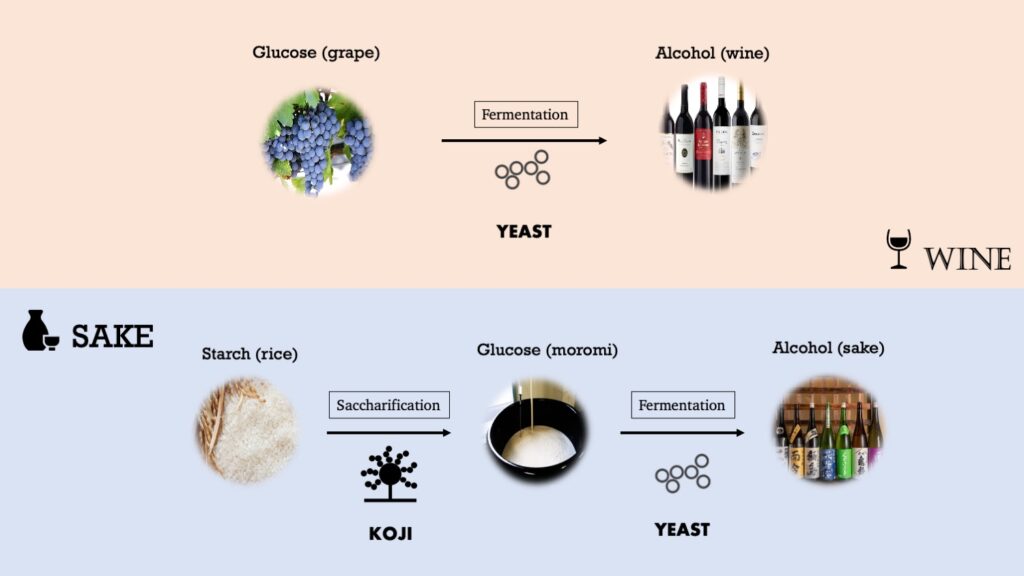
On the other hand, the fermentation process of Japanese Sake is called “Multiple parallel fermentation”. To produce alcohol, breweries need glucose in a tank, but rice do not have glucose like grape. Instead of glucose rice contains starch and it is required to convert starch into glucose to produce alcohol.
Koji assist this conversion. Enzyme from koji mold assist starch convert into glucose, and the glucose will be converted into alcohol. In wine brewing process, we get yeast from the skin of grapes, but we polish rices so how can we get the yeast in Sake brewing process?
The answer is the building of Sake brewery. In the brewing process of Sake, they use the yeast floating in the air of breweries, because yeast is living in the wooden facilities. So the tanks have been ope-topped to get yeast from the air.
Today, in both Sake and wine brewing, they tend to use artificially cultivated yeast in order to achieved the designed taste afte brewing process.
Alcohol by volume (ABV)
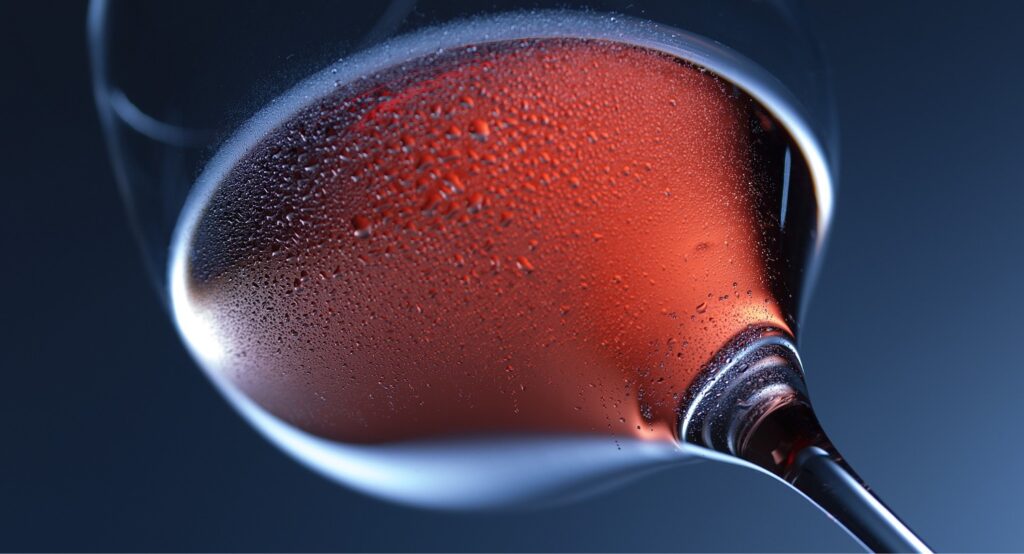
2nd difference is alcoholic contents, so-called “ABV”(Alcohol by volume).
Japanese Sake and Wine are both fermented alcohol, and both recommended to enjoy during the meal, but when we listen to the customer’s voice there are difference in how they feel.
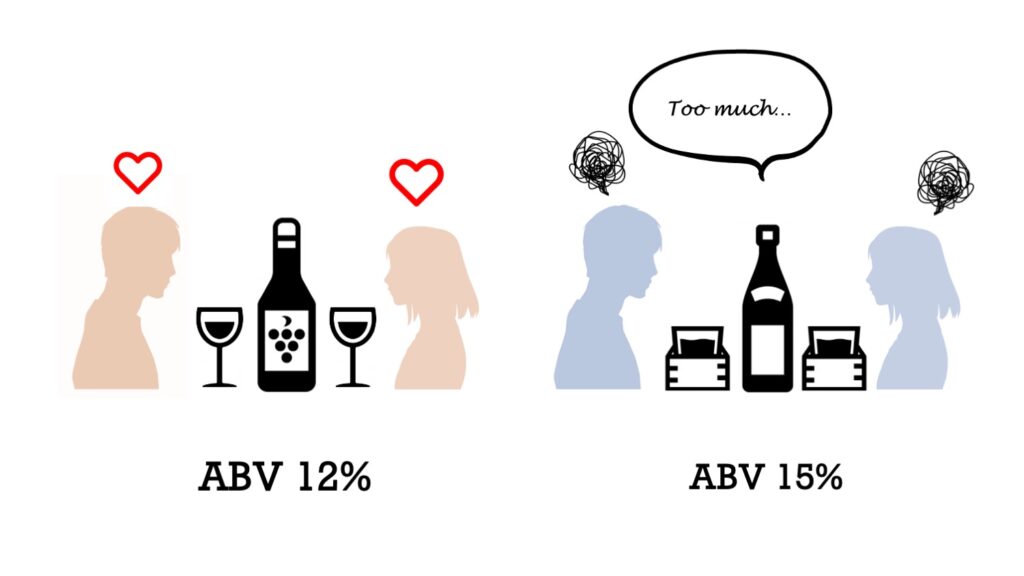
For example, it is very common to order 1 bottle of wine during the dating meal between 2 in a restaurant scene in Europe. Nevertheless, there are many people cannot finish 1 bottle of Japanese Sake by 2. Of course, it may be because they are not used to the taste of Japanese Sake, but a lot of them say “alcohol contents are too high”.
The main reason to answer to the question is the brewing method of Japanese Sake. To get the unique taste and flavor, Japanese Sake have to be kept at relatively lower temperature during the brewing process. It is because the yeast of Japanese Sake works at lower temperature and to keep the temperature they can get unique taste and flavor in Sake. As a result Japanese Sake will reach to 20% of alcohol contents after the fermentation. Then they balance Sake by adding water.
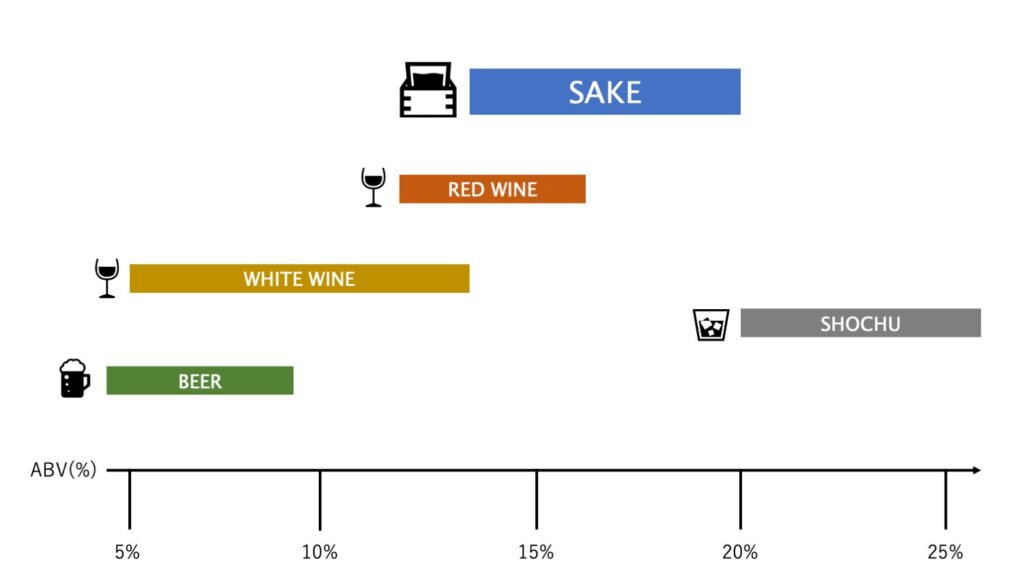
So the average alcoholic contents of Wine is around 12~14%, but for Sake it is around 15~16%.
As technology advanced recently, there are many Sake at lower alcoholic contents in the market as well, but basically Sake alcoholic contents are relatively higher than Wine.
For the beginners, it is recommended to start with low alcoholic Sake to enter to the world of Japanese Sake.
Drinking Temperature Range
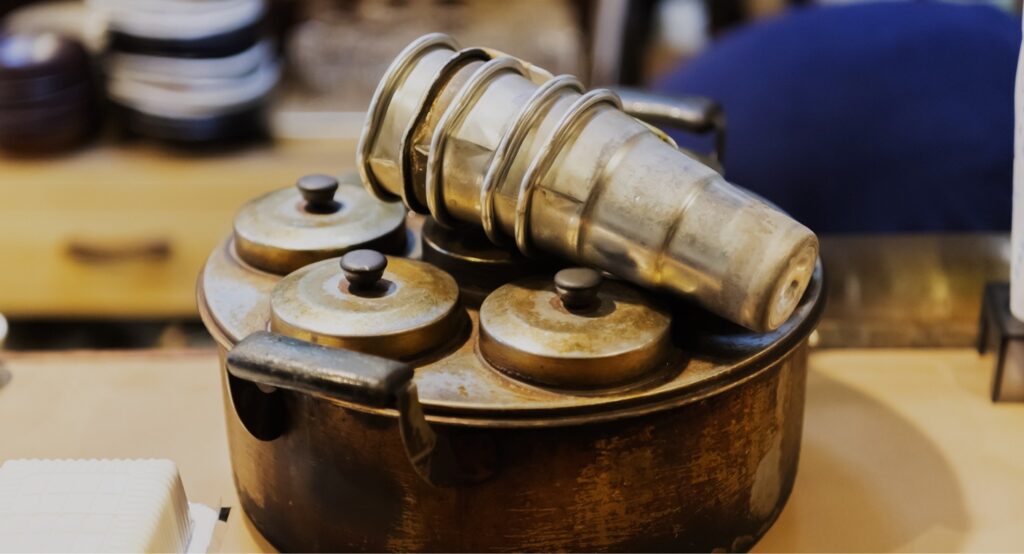
Another difference between Japanese Sake and Wine is the drinking temperature range.
Generally, the ideal drinking temperature of red wine is 14℃, white wine is 6~9℃. It is because the contents of red wine: tannins and fruity aroma. At low temperature those contents make people feel bitter and it becomes difficult to feel the aroma, so red wine is served at closer temperature to room temperature and as white wine do not contents such things so served at lower temperature.
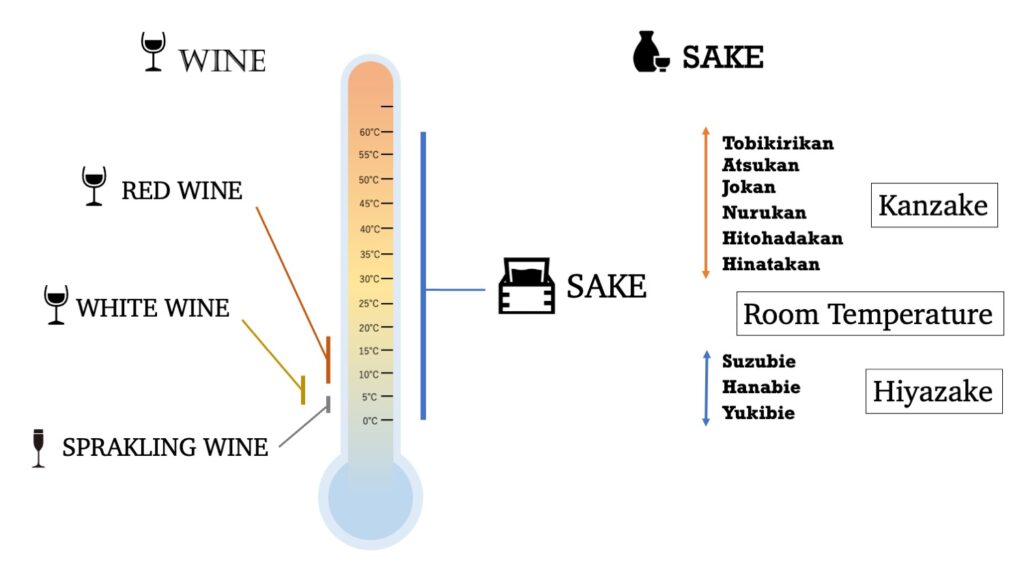
In contrast, Japanese Sake has much wider range of drinking temperature.
As you can see from the above diagram, depending on the type of Sake, you can enjoy Sake from 0℃ to around 60℃ which you can select scene by scene. There are very few alcohol which you can warm and hot alcohol which makes you feel other good aspect of the alcohol; Sake is one of the alcohol products you can enjoy at high temperature.
When you enjoy with warm dish, or when you expect to feel the change of the seasons, Japanese Sake can be one of the alcohol make you satisfied from the bottom of the heart.
After-taste
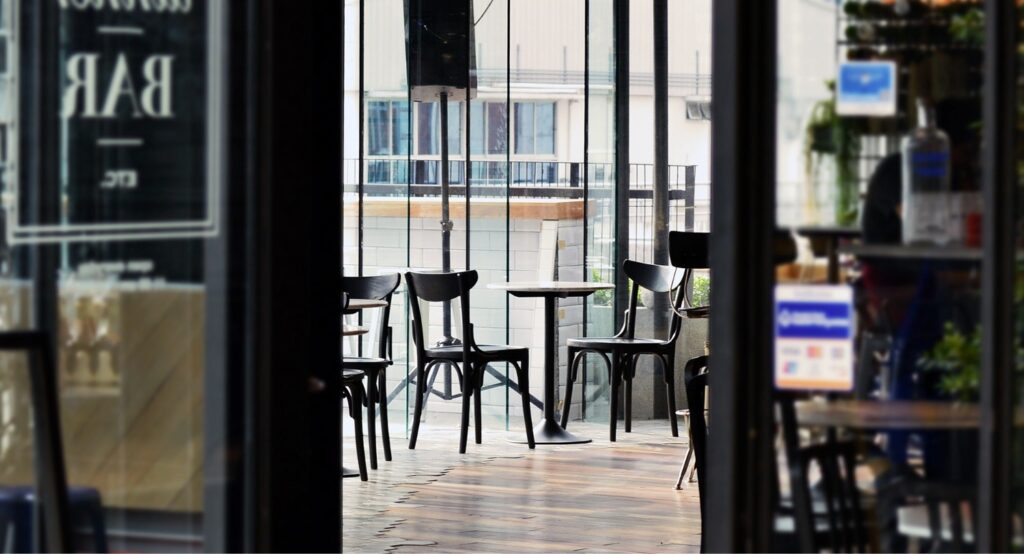
In the world of wine, the good wine has long after-taste to keep you in the world of wine for a long time. There are wine which makes you feel more than 10 seconds of after-taste, but how about Japanese Sake?
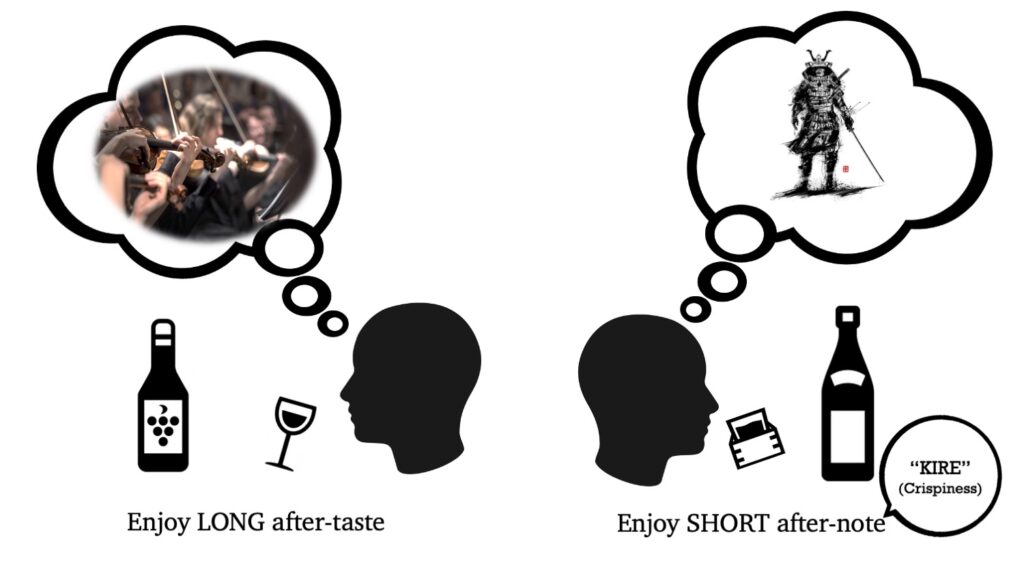
Frankly, the basic stance in after-taste is completely opposite in Japanese Sake.
After you swallow sake, it is said that the taste will vanish like a magic in the superb Sake. This sudden drop of the taste is called “Kire” in English crispiness.
We enjoy both Japanese Sake and wine in the dining scene and feel the marriage. We enjoy the harmony of the dish and wine for a long time with after-taste like you enjoy the harmony of orchestra. In Japanese Sake, this crispiness like Samurai sword makes you refresh and allows to enjoy another dishes.
To understand the world of Sake, please do not understand Sake like wine and enjoy “Kire” of Japanese Sake.
Hope you learn about Japanese Sake and difference with wine.
Enjoy Sakeful life!
Related Contents








